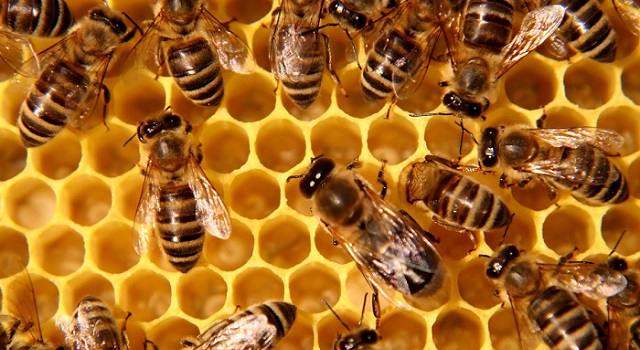
Miami, United States | AFP | Traces of pesticides that act as nerve agents on bees have been found in 75 percent of honey worldwide, raising concern about the survival of these crucial crop pollinators, researchers said Thursday.
Human health is not likely at risk from the concentrations detected in a global sampling of 198 types of honey, which were below what the European Union authorizes for human consumption, said the report in the journal Science.
However, the study found that 34 percent of honey samples were contaminated with “concentrations of neonicotinoids that are known to be detrimental” to bees, and warned that chronic exposure is a threat to bee survival.
Bees help pollinate 90 percent of the world’s major crops, but in recent years have been dying off from “colony collapse disorder,” a mysterious scourge blamed on mites, pesticides, virus, fungus, or some combination of these factors.
“The findings are alarming,” said Chris Connolly, a neurobiology expert at the University of Dundee, who also wrote a Perspective article alongside the research in Science.
“The levels detected are sufficient to affect bee brain function and may hinder their ability to forage on, and pollinate, our crops and our native plants.”
Neonicotinoids have been declared a key factor in bee decline worldwide, and the European Union issued a partial ban on their use in 2013.
For the Science study, the European samples were collected largely before this ban took effect, Connolly said. Further research is needed to gauge the effectiveness of the EU steps.
– Five common pesticides –
Bees collect nectar as they pollinate plants, and over time this sugary liquid accumulates into the thick syrup of honey.
To test contamination levels, samples of honey were taken from local producers worldwide, and researchers tested for five commonly used neonicotinoids: acetamiprid, clothianidin, imidacloprid, thiacloprid, and thiamethoxam.
These pesticides, introduced in the mid 1990s, are based on the chemical structure of nicotine and attack the nervous systems of insect pests.
“Overall, 75 percent of all honey samples contained at least one neonicotinoid,” said the study, led by Edward Mitchell of the University of Neuchatel in Switzerland.
 The Independent Uganda: You get the Truth we Pay the Price
The Independent Uganda: You get the Truth we Pay the Price


